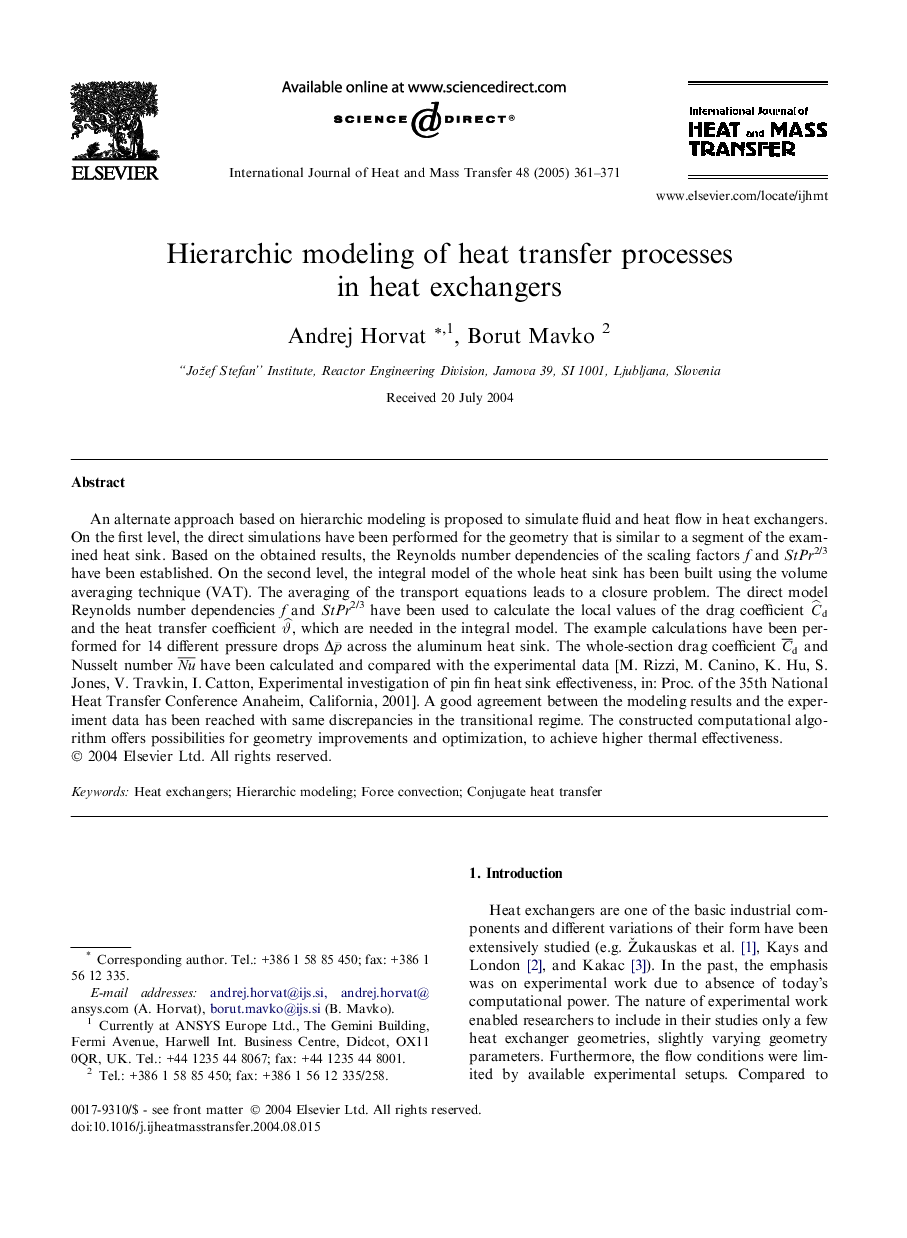| Article ID | Journal | Published Year | Pages | File Type |
|---|---|---|---|---|
| 9691689 | International Journal of Heat and Mass Transfer | 2005 | 11 Pages |
Abstract
An alternate approach based on hierarchic modeling is proposed to simulate fluid and heat flow in heat exchangers. On the first level, the direct simulations have been performed for the geometry that is similar to a segment of the examined heat sink. Based on the obtained results, the Reynolds number dependencies of the scaling factors f and StPr2/3 have been established. On the second level, the integral model of the whole heat sink has been built using the volume averaging technique (VAT). The averaging of the transport equations leads to a closure problem. The direct model Reynolds number dependencies f and StPr2/3 have been used to calculate the local values of the drag coefficient C^d and the heat transfer coefficient Ï^, which are needed in the integral model. The example calculations have been performed for 14 different pressure drops Îp¯ across the aluminum heat sink. The whole-section drag coefficient C¯d and Nusselt number Nu¯ have been calculated and compared with the experimental data [M. Rizzi, M. Canino, K. Hu, S. Jones, V. Travkin, I. Catton, Experimental investigation of pin fin heat sink effectiveness, in: Proc. of the 35th National Heat Transfer Conference Anaheim, California, 2001]. A good agreement between the modeling results and the experiment data has been reached with same discrepancies in the transitional regime. The constructed computational algorithm offers possibilities for geometry improvements and optimization, to achieve higher thermal effectiveness.
Related Topics
Physical Sciences and Engineering
Chemical Engineering
Fluid Flow and Transfer Processes
Authors
Andrej Horvat, Borut Mavko,
